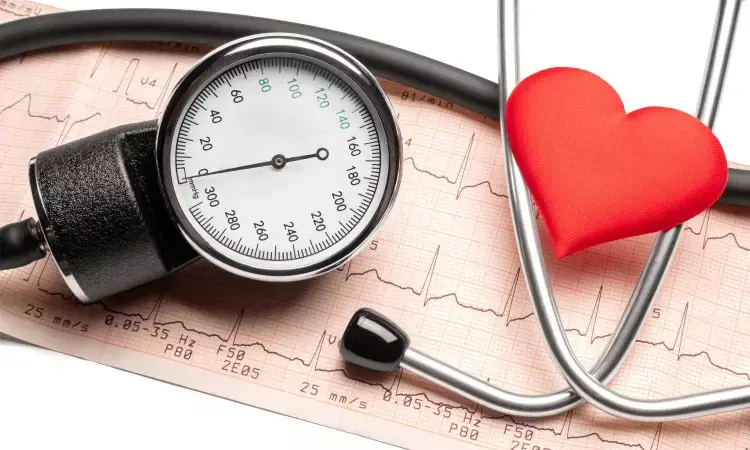- Home
- Medical news & Guidelines
- Anesthesiology
- Cardiology and CTVS
- Critical Care
- Dentistry
- Dermatology
- Diabetes and Endocrinology
- ENT
- Gastroenterology
- Medicine
- Nephrology
- Neurology
- Obstretics-Gynaecology
- Oncology
- Ophthalmology
- Orthopaedics
- Pediatrics-Neonatology
- Psychiatry
- Pulmonology
- Radiology
- Surgery
- Urology
- Laboratory Medicine
- Diet
- Nursing
- Paramedical
- Physiotherapy
- Health news
- Fact Check
- Bone Health Fact Check
- Brain Health Fact Check
- Cancer Related Fact Check
- Child Care Fact Check
- Dental and oral health fact check
- Diabetes and metabolic health fact check
- Diet and Nutrition Fact Check
- Eye and ENT Care Fact Check
- Fitness fact check
- Gut health fact check
- Heart health fact check
- Kidney health fact check
- Medical education fact check
- Men's health fact check
- Respiratory fact check
- Skin and hair care fact check
- Vaccine and Immunization fact check
- Women's health fact check
- AYUSH
- State News
- Andaman and Nicobar Islands
- Andhra Pradesh
- Arunachal Pradesh
- Assam
- Bihar
- Chandigarh
- Chattisgarh
- Dadra and Nagar Haveli
- Daman and Diu
- Delhi
- Goa
- Gujarat
- Haryana
- Himachal Pradesh
- Jammu & Kashmir
- Jharkhand
- Karnataka
- Kerala
- Ladakh
- Lakshadweep
- Madhya Pradesh
- Maharashtra
- Manipur
- Meghalaya
- Mizoram
- Nagaland
- Odisha
- Puducherry
- Punjab
- Rajasthan
- Sikkim
- Tamil Nadu
- Telangana
- Tripura
- Uttar Pradesh
- Uttrakhand
- West Bengal
- Medical Education
- Industry
Scale-up efforts to prevent, detect and control Hypertension: WHO

“Together, the achievement of these targets will significantly increase our prospect of attaining the NCD-related SDGs to reduce premature NCD mortality by one-third, and create a healthier, more equitable and sustainable South-East Asia Region for all,” said Dr Khetrapal Singh.
New Delhi: Hypertension is the single most important leading cause of cardiovascular disease mortality globally and in the WHO South-East Asia Region. With almost half of the people with hypertension in the Region unaware of their condition there is an urgent need to scale up hypertension services, to prevent, detect and control hypertension.
“Hypertension is often called a ‘silent killer’ as many people are unaware of their problem which if left untreated, can lead to disability, poor quality of life or even a deadly heart attack or stroke,” said Dr Poonam Khetrapal Singh, Regional Director, WHO South-East Asia Region, adding that “the only way to know is to get your blood pressure checked regularly.”
While a quarter of the adult population in the WHO South-East Asia Region has high blood pressure, only one in three are on treatment while just one in ten adults with the condition have it under control.
Modifiable risk factors for hypertension include unhealthy diets such as excessive salt consumption, a diet high in saturated fat and trans fats, low intake of fruits and vegetables; physical inactivity; consumption of tobacco and alcohol; and being overweight or obese. Lifestyle changes like eating a healthier diet, quitting tobacco and being more active can help lower the risk of blood pressure.
“Hypertension disproportionately impacts low-and middle-income countries, affecting not just health but all areas of social and economic development,” said Dr Khetrapal Singh.
Since 2014, prevention and control of noncommunicable diseases (NCDs) have been a flagship priority in the Region with targeted efforts to combat hypertension and control NCDs through evidence-based and cost-effective ‘best buys.’
Making focused efforts, all countries in the region have established baseline population salt intakes to study consumption patterns in comparison to WHO-recommended salt intake of less than 5g per person per day.
Three countries are implementing front-of-the-pack labelling for consumer awareness. Around 1.6 billion people are protected from the negative effects of industrially produced trans fats through legislation limiting trans fats in food. The Region has witnessed the steepest decline in tobacco use and is on track to achieve an average reduction of almost 32% by 2025.
The Region is prioritizing actions through the South-East Asia HEARTS initiative (SEA HEARTS) which strives to bring together tobacco control, salt reduction, and elimination of industrial trans-fat along with hypertension and diabetes coverage and control through primary health care.
Over the past five years, 10 million more people with hypertension have accessed protocol-based management, almost doubling the control rate, from 26% to 47%.
Measure Your Blood Pressure Accurately, Control it, Live Longer, is the theme of this year’s World Hypertension Day which aims to raise awareness of the importance of hypertension and its serious medical complications while emphasizing prevention, detection and treatment.
“Together, the achievement of these targets will significantly increase our prospect of attaining the NCD-related SDGs to reduce premature NCD mortality by one-third, and create a healthier, more equitable and sustainable South-East Asia Region for all,” said Dr Khetrapal Singh.
WHO remains committed to supporting countries to reduce hypertension as a public health problem and accelerate progress in ensuring equitable access to hypertension services so that people can live healthy life to their full potential.
WHOhypertensionworld health organisationblood pressureworld hypertension daycardiovascular diseaseheart attackBP
Kajal Rajput joined Medical Dialogues as an Correspondent for the Latest Health News Section in 2019. She holds a Bachelor's degree in Arts from University of Delhi. She manly covers all the updates in health news, hospitals, doctors news, government policies and Health Ministry. She can be contacted at editorial@medicaldialogues.in Contact no. 011-43720751
Next Story


